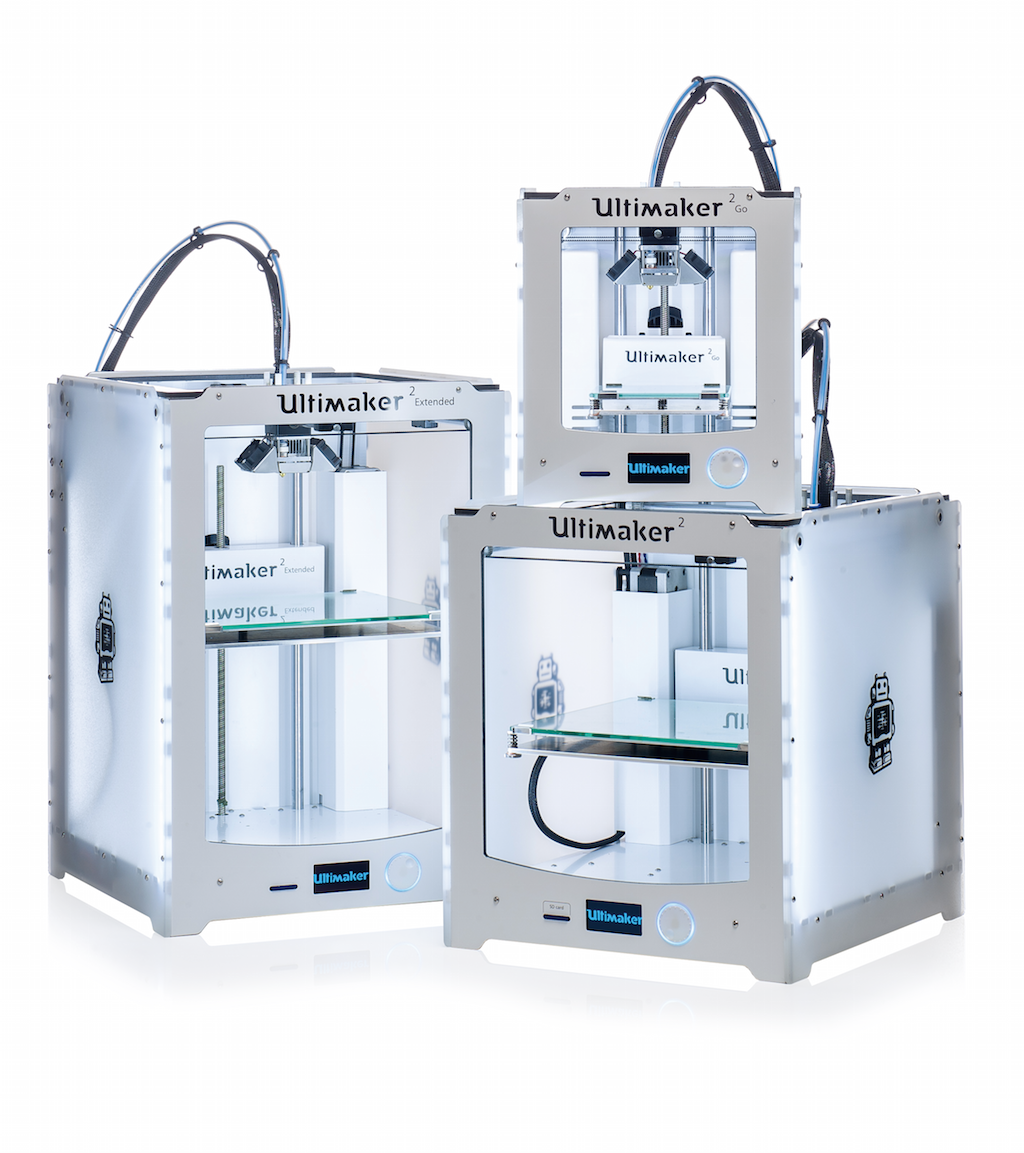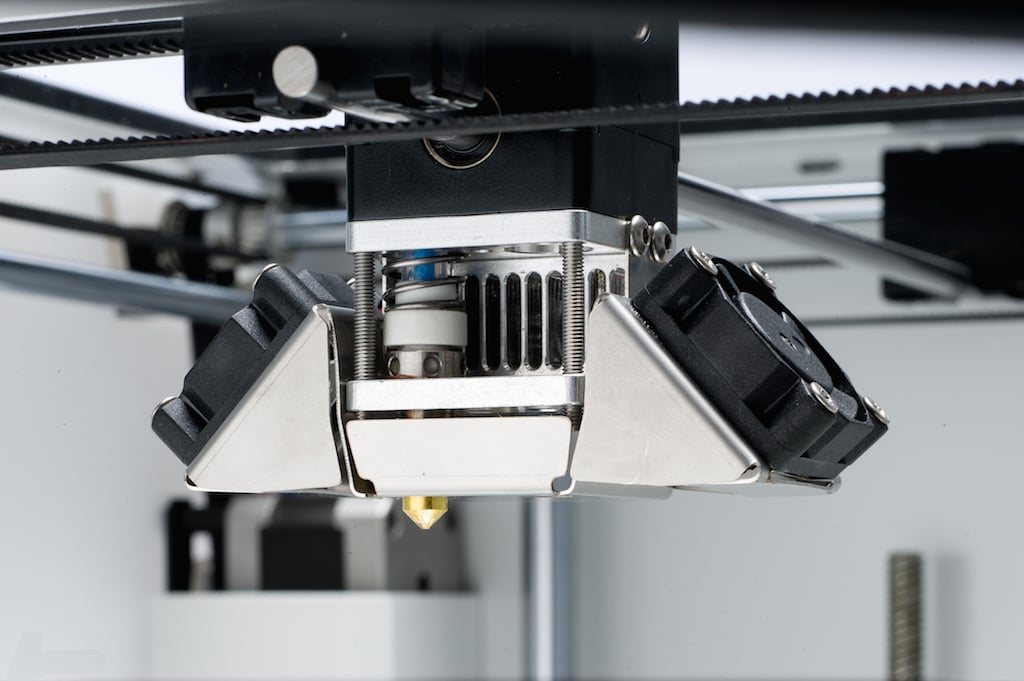
Personal 3D printer manufacturer Ultimaker has announced not one, but two new machines. One big, one small.
The Ultimaker 2 Go joins the increasing number of “mini” machines that seem to be very popular among consumers wishing to spend a bit less on their equipment. The “2 Go” has a build volume of 120 x 120 x 115mm, which is somewhat less than the volume of the standard Ultimaker 2, 230 x 225 x 205mm. This sizing falls right in the middle of the recent trend of “mini” 3D printers that have cubic volumes in the range of 100-150mm.
The 2 Go is capable of easy relocation as it’s lighter and physically smaller. Indeed, Ultimaker has equipped the machine with several features to make portability more simple. The name “2 Go” is indeed appropriate.
The Ultimaker 2 Extended is a larger machine. While it has the same lateral build dimensions as the Ultimaker 2, 230 x 225, its height has increased by 100mm, providing the capability of printing objects as tall as 305mm. Tall printing is important because many common objects seem to have a tall shape – and also because it minimizes the bed contact area, where print failures can occur due to warping.

We haven’t mentioned the other specifications for these machines for a simple reason. You may notice that the machines appear visually similar, and it’s not only the style that’s the same. That’s because the two new machines have fundamentally the same internal hardware as the Ultimaker 2. They have precisely the same specifications for speed, accuracy and resolution. Yes, they all can print layers as small as 0.02mm, so you can expected exceptional prints from the new machines.
There’s one exception, though. The 2 Go does not have a heated print surface, so you cannot successfully print higher temperature plastics or any plastic that warps. Therefore the 2 Go is certified only to print PLA plastic. While this restricts the use of the 2 Go somewhat, it is likely not much of a hinderance to the machine’s target market: consumers. They’ll likely be quite satisfied with PLA prints. Meanwhile, the Ultimaker 2 Extended supports all “normal” Ultimaker plastics, including PLA, ABS, PET and many others.
One other aspect of this announcement is very surprising: Ultimaker did not discontinue any of their existing product line. While you might expect the Ultimaker 2 to continue as it retains the same internal hardware as the new machines, the Original Ultimaker still survives. It’s now touted as the machine for DIY enthusiasts, where they encourage modifications and provide a full open source environment. It appears Ultimaker wishes to address both new and existing client bases.
The machines are not quite available yet, but they’re expected to be for pre-order this March and delivering in April. The Ultimaker 2 Go is priced at USD$1,450 and the Ultimaker 2 Extended is priced at USD$3,030.
Via Ultimaker

